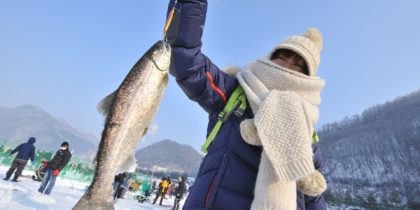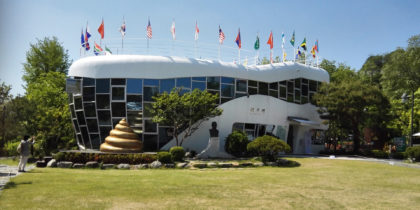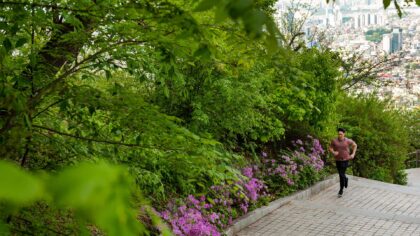A sprawling metropolis in the heart of South Korea, Seoul successfully integrates its modern progress alongside the country’s ancient tradition. This capital city amazes visitors with its mix of high-rise skyscrapers, technologically-forward modes of transportation, and a feverish obsession with pop culture — all which exist in tandem with grandiose palaces and ancient Buddhist temples. The city can overwhelm first-time visitors, so start your travels with these three must-see attractions.
Visit the Gyeongbokgung Palace
One of the most iconic attractions in Seoul, the Gyeongbokgung Palace was the first royal palace built by the Joseon Dynasty. Highlights of palace include a trip to the Geunjeongjeon (Imperial Throne Hall), the central hall of the palace and where ceremonies like coronations take place; the Gyeonghoeru (Pavilion) that sits in an island at the middle of a rectangular lake accessible through three stone bridges; the Hyangwonjeong (Pavilion), a hexagonal pavilion also set in the middle of a lake; and the actual Geoncheonggung (Palace), the royal residence of a former Emperor.
The Geoncheonggung also features two sets of impressive gates that welcome visitors. Plan to watch the daily reenactment of the Changing of the Royal Guard and the Patrol Ritual. Located in front of the Heungnyemun (Gate), the ceremonies are a lovely display of culture, history, and tradition.
Relax at the Cheonggyecheon
Go for a leisurely stroll downtown along the Cheonggyecheon waterway. Flowing through downtown Seoul, this 6 ½-mile stream starts at the Cheonggye Plaza and passes many of the city’s major attractions. As you stroll, stop to admire the Spring Tower sculpture and the Candlelight Fountain, decorated with multicolored lights, it flows directly into the Cheonggyecheon stream.
Cross over the old-fashioned Gwangtonggyo bridge, splash in the Tunnel Fountain where tourists can dip their feet among water tunnels, seek solace at the Beodeul Wetland of bird sanctuary, and sate your inner history-buff at the Cheonggyecheon Museum. that tells the story of the stream and how it was buried underground and been restored over the years.
Dining and Shopping at Namdaemun Market
Namdaemun Market, the largest traditional market in Korea, boasts over 10,000 stores hawking everything from local goods, food, apparel, home wares, and handicrafts. It’s the perfect spot to dive into local culture and eat traditional street food and Korean snacks, and buy souvenirs like traditional hanbok attire.




